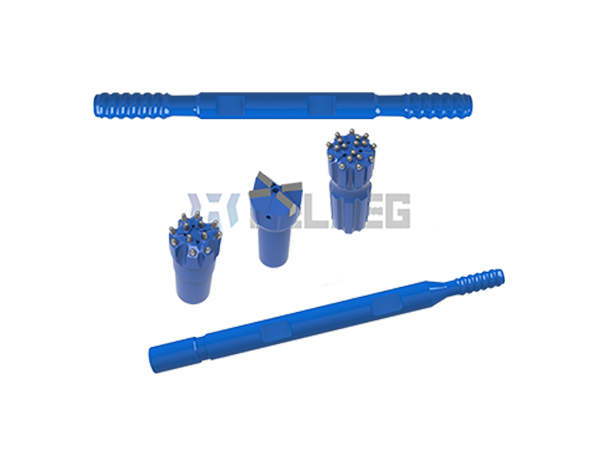2020 官网升级中!现在您访问官网的浏览器设备分辨率宽度低于1280px请使用高分辨率宽度访问。
The quality of rock drilling tools after heat treatment is often exposed after use, and the metallographic structure cannot be determined by the hardness test often used in production, and samples must be taken after destruction for metallographic analysis to be known. Therefore, there are often cases of qualified hardness and unqualified organization in the production of rock drilling tools, thus causing hidden quality problems. What are the specific factors that affect the quality of heat treatment of rock drilling tools?

In the heat treatment of rock drilling tools, specific quality phenomena are expressed in the structural design of rock drilling tools, quality control of raw materials, quality assurance of technical documents, quality control of process materials, process execution, equipment operation status, operator level, and status, etc.
Rock drilling tools are made of steel. If there are various defects and problems in the steel itself, it may cause heat treatment defects and problems during heat treatment, which will affect the heat treatment quality of parts and make them scrapped. Design is the starting point of quality control, which directly affects the quality, manufacturing difficulty, and service life of rock drilling tools. For heat treatment, the design process must consider geometry, select materials, and not produce heat treatment defects. To improve the design of the heat treatment process, fully consider the difficulty, cost, and production cycle of the heat treatment process. Most rock drilling tools are forged and then machined into shape. The purpose of forging is not only to shape it but also to change the distribution of carbides and improve the quality of internal structure through forging. The defects left in the steel after forging will have a great impact on the quality of heat treatment, such as forging cracks, uneven structure, over-burning, and appearance defects. The surface quality of rock drilling tools has an important influence on heat treatment performance. Residual stresses caused by machining may produce deformation during heat treatment, and rough surfaces, scratches, and knife marks can cause stress concentration and lead to heat treatment cracks.